Captain Omery Carl Weathers
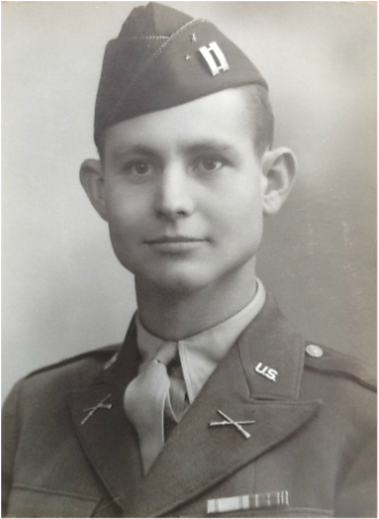
- Unit: 2nd Infantry Division, 38th Infantry Regiment
- Service Number: O-410223
- Date of Birth: February 4, 1919
- Entered the Military: March 29, 1941
- Date of Death: June 9, 1944
- Hometown: Mammoth Spring, Arkansas
- Place of Death: outside of Trévières, France
- Award(s): Distinguished Service Cross, Purple Heart
- Cemetery: Plot A, Row 16, Grave 9, Normandy American Cemetery. Colleville-sur-Mer, France
Mentored by Ms. Sherry Tipps-Holder
Conway High School
2013-2014
Early Life
Growing Up in Arkansas
Omery Carl Weathers, Jr., known to his friends and family as “Carl,” was born in 1919 in the small rural community of Mammoth Springs, Arkansas. As the second of six children to two community leaders, Omery and Lucy Weathers, Carl was expected to accomplish great things from a young age.
The 1930 census records that the Weathers family moved to Salem, Arkansas, another small community in the same county as Mammoth Springs. In Salem, Weathers and his siblings attended the local public school, and the family became active members in the community and the Methodist Church of Salem.
After moving to Salem, Weather’s father entered the public service as Sheriff and Clerk of Fulton County. According to Don Weathers, “Omery firmly believed that friends are more important than money. This paid off when he decided to run for public office and was elected Sheriff and Collector.” Omery went on to become a Fulton County Judge.
In 1934, Omery, Sr. passed away suddenly, and the Weathers family had to adjust their way of life. Weather’s mother, Lucy, served in her husband’s role as Fulton County Judge for his term’s remainder. As the oldest children, Don and Carl took on part-time jobs to provide for their four younger siblings and mother.
According to all who knew him, Weathers was an All-American kid. He played on the Salem High School basketball team and broke his arm while attempting to pole vault with some neighborhood friends. In every photograph, Weathers is in the center with a wide grin on his face. Upon graduation from high school, Don and Carl had a rare opportunity for boys their age during the Great Depression. Omery and Lucy always wanted to send their boys to college and worked and sacrificed to make that possible. Both boys attended the University of Arkansas and joined the Reserve Officer Training Corps, which sparked their military careers.
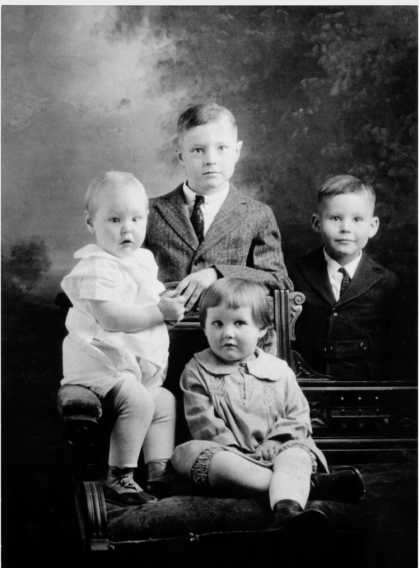


Homefront
Arkansas in World War II
Between 1941 and 1945, Salem, Arkansas, went through social and economic changes to contribute to the war effort. The creation of ordnance plants, rationing, and the presence of Japanese-American relocation camps altered Arkansans during World War II. Coming directly out of the Great Depression, wartime production of materials revived the economies of Arkansas and the U.S. At the same time, women’s roles changed through their work in ordnance plants. At the same time, Japanese Americans lost many of their rights and were placed in internment camps, two of which were located in the Arkansas Delta.
Women Ordnance Workers (WOWs)
The family structure on the home front was changed dramatically in World War II, as military deployment affected almost every family in Fulton County. With nearly 200,000 Arkansas servicemen deployed, many women in Fulton County left for the gulf coast to build ships for the war department. Arkansas became the home to six ordnance factories. Not only did these factories produce war materials, but they also provided jobs for those who had been out of work due to the Great Depression. War materials, such as explosives, detonators, and fuses, were built in five of the six plants in Arkansas. The sixth plant, located in Hope, Arkansas, was used to test materials produced in ordnance plants from other parts of the country. At its height, military production included over 25,000 Arkansas ordnance workers– most of whom were women.
Rationing
In addition to wartime production, Lucy Weathers and other people in Salem and around the country were faced with government regulations on rationing food. Products such as sugar, nylon, and tires were in limited supply or even impossible to obtain. Rationing books were given to citizens to control the amount of a particular good a family could buy. To provide additional food, many Arkansans planted Victory Gardens. These home gardens offered fresh fruits and vegetables for families and were grown wherever space was available. The War Food Administration also partnered with schools to ensure that children were getting enough to eat.
War Bonds
Another way Fulton County residents supported the war effort was through the sale of war bonds. All Americans were encouraged to buy these bonds, even children. Schools often held war bond drives where many children could buy five, ten, or 25 cent stamps to collect in war bond booklets. Posters encouraged individuals to do their part in the war effort, reminding Americans that they too had responsibilities in the war.
Japanese Internment Camps
After the Japanese bombing of Pearl Harbor, President Franklin D. Roosevelt’s Executive Order 9066 ordered the relocation of Japanese Americans to internment camps. Seven different states hosted ten of these camps, two of which were located in the Arkansas Delta in the rural communities of Jerome and Rohwer. Each camp was surrounded by guard towers and barbed wire fences, resembling prisoner-of-war camps. Large groups of families lived in close quarters inside these internment camps. Many people shared one room, and bathrooms were communal and crowded.
School-aged children made up approximately one-quarter of the population in most of these relocation camps. Arkansas Governor Homer Adkins would not allow them to attend local schools. They attended schools within the camps. Children had a daily exercise in the courtyard area and were required to say the Pledge of Allegiance in school. Star Trek actor George Takei was among the Japanese American children interned at an Arkansas concentration camp.
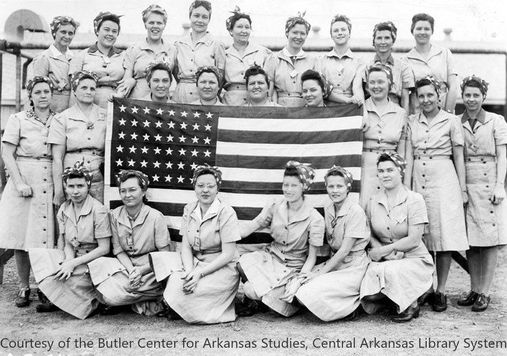
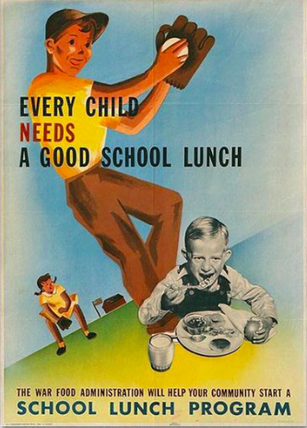
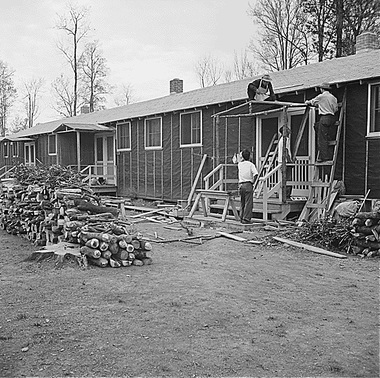
Military Experience
During World War II, 194,645 Arkansans served in the armed forces of the United States. Of that number, 3,519 young soldiers were killed in combat, representing approximately ten percent of the population.
Razorback ROTC Training
Weathers joined the University of Arkansas Reserve Officers’ Training Corps (ROTC) program in 1937. The ROTC, established in 1916 by President Woodrow Wilson with the signing of the National Defense Act, was created to train young men to become officers in the United States Army. Weathers received his commission as a second lieutenant in the U.S. Army on May 29, 1941.
Fort Sam Houston
Lieutenant Weathers was assigned to the 2nd Infantry Division, 38th Infantry Regiment, Company K, at Fort Sam Houston, Texas. By the summer of 1942, the division participated in maneuvers in Louisiana.
By October 1942, Weathers received a promotion to First Lieutenant and the 2nd Infantry Division received orders to transfer to Camp McCoy, Wisconsin. The division departed on Thanksgiving Day and moved by rail. At Camp McCoy, Weathers was promoted to captain. The men participated in intensive training for winter warfare in extreme conditions that included the use of skis and snowshoes. In February, the men participated in winter weather maneuvers in Michigan.
In the late summer of 1942, the 2nd Infantry Division prepared for overseas deployment, and the men were issued new clothing and equipment. The final order arrived in late September, and the men moved by rail to the staging area at Camp Shanks, New York. In early October, the division sailed out of New York Harbor with a battleship, destroyer, and air escort.
Advanced Training
In 1943, the 2nd Infantry Division deployed to Northern Ireland for advanced invasion training. Captain Weathers arrived and disembarked in Belfast on October 17, 1943. From Belfast, the 2nd Infantry Division, 38th Infantry Regiment traveled by rail to County Armagh. Many of the men were quartered at or around Newry, Northern Ireland. The enlisted men lived in Nissen huts, and Company K soldier, Everett Cady, reported that the men would tie up straw to use as mattresses on cots.
The weather was often cloudy and overcast with frequent rain or fog as the men were subjected to training in the thick hedgerows of the Irish landscape, which was similar to Normandy. In a 1995 oral history, Ben Parish, a soldier under Captain Weathers’ command, stated, “There’s where we got our hedgerow training for the invasion. We couldn’t figure out how come they were giving us all that hedgerow training, but we found out when we got over there in France. Part (of the training) was at night and part of the time in daytime.”
Carl and Pat
While in Belfast on a pass one evening, Weathers attended a dance where he met his lovely wife, Pat. The story of their meeting, recounted by their son, Omery Carl Weathers III:
My mum did tell me about meeting my father. I reckon that they met soon after his arrival in Northern Ireland. My Dad’s company were billeted in the town of Newry and it was the habit of many of the soldiers to visit the big city, a journey of about fifty miles by jeep or train. The U.S. Soldiers made a big hit here and many of the young girls were swept off their feet. The people of Ulster were on food rationing and there were many of the small luxuries of life not available, such as nylon stockings, chewing gum, and American cigarettes, and from what I have been told the rations were also not kept to barracks. My mother lived on the outskirts of SE Belfast and there were some quite big houses near my grandparent’s home. The houses were big enough to entertain some of the U.S. troops and the officers, I think of company K, were invited to meet some of the local girls. This was a five minute walk from my mum’s family home and is where she met my father. She told me he made a special effort to meet her and that she was quite taken back by his bold attitude to announce when the evening was over that he would be back to Belfast to take Pat out. It is certain that he kept his word. My grandfather was a dispatch rider in WWI and my dad got on well with him. My mother said they sometimes sat up late to chat, I suppose about war issues and experiences. My dad was thought of very highly by the family. Mum was twenty-one years old when they met.
Carl and Pat married. Thousands of young American servicemen married European women while deployed overseas. Unfortunately, Carl would never meet the child that resulted from this union, his namesake. Omery Carl Weathers, III was born in 1944, just months after his father’s heroic death in the D-Day invasion.
From Ireland to Wales
In mid-April through May 1944, training intensified as Operation Overlord approached. The 2nd Infantry Division departed for a short sea voyage on April 15 and arrived in Wales on April 18, 1944, to complete their training. The 38th Infantry Regiment was quartered in and around Kidwelly, Wales.
In May, stringent security confined the 38th Infantry troops to the final marshaling areas in South Wales. Company K soldier Ben Parish stated, “I know they made a rule just before the invasion. We couldn’t leave camp.” Captain Weathers embarked from Swansea, Wales, on June 4 with the 3rd Battalion.
The 1st Infantry Division and 29th Infantry Division were assigned to lead the assault on Omaha Beach on June 6, 1944. The 2nd Infantry Division would follow, attack inland and help to secure the beachhead on June 7.
The Trévières Offensive, June 7-10, 1944
On June 7, 1944, Captain Weathers of the 2nd Infantry Division, 38th Infantry Regiment, came ashore on Omaha Beach. The 9th and 38th Infantry Regiments were assigned to head towards the French town of Trévières to relieve the 1st Infantry Division, followed by an attack on June 9.
The 38th Infantry Regiment men started their offensive with only rifles and carbines because heavier weapons had to be unloaded from the barges and carried atop Omaha Beach to high ground. After receiving the field order at the assembly area on June 8, the regiment attacked on June 9 at high noon.
They immediately encountered stiff resistance from German positions around their former headquarters at Trévières. They faced fire from artillery and mortars of the German 352nd Infantry Division, the 716th Division, and the 30th Schnelle Brigade. They soon found themselves pinned as they crossed the Aure River to the ground. “A sergeant who was with Captain Weathers said he asked him to stay down, but the captain answered that he could not give his commands and lead his men lying flat on the ground.” Captain Weathers ran across the entire front line of his company, rallying his men to move forward. Following his example, the 38th Infantry Regiment mounted an assault and continued only a short distance when Captain Carl Weathers was struck and killed by a German artillery shell. However, his men continued their assault and captured Trévières on June 10.
Captain Weathers’ heroics did not go unnoticed. For his calmness and bravery under fire, his sacrifice, and his unwavering devotion to duty, he was awarded the Distinguished Service Cross in addition to a Purple Heart.

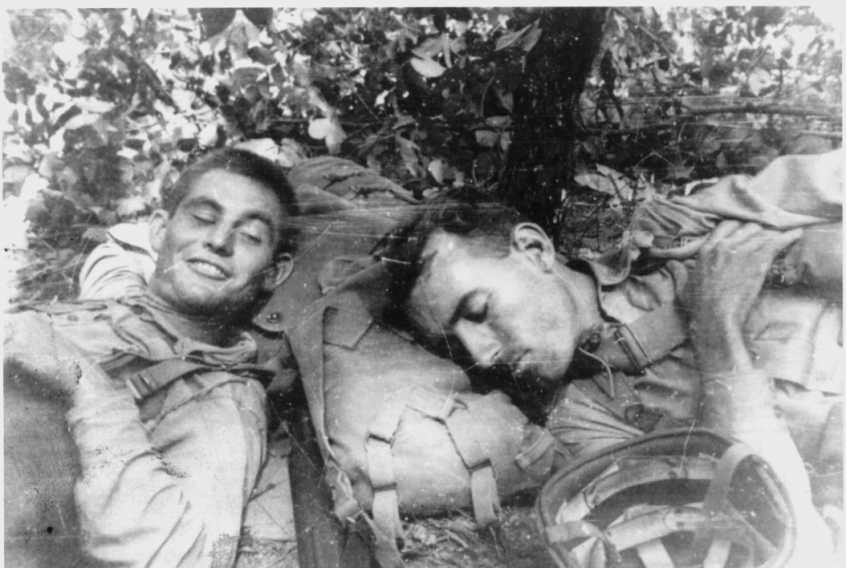
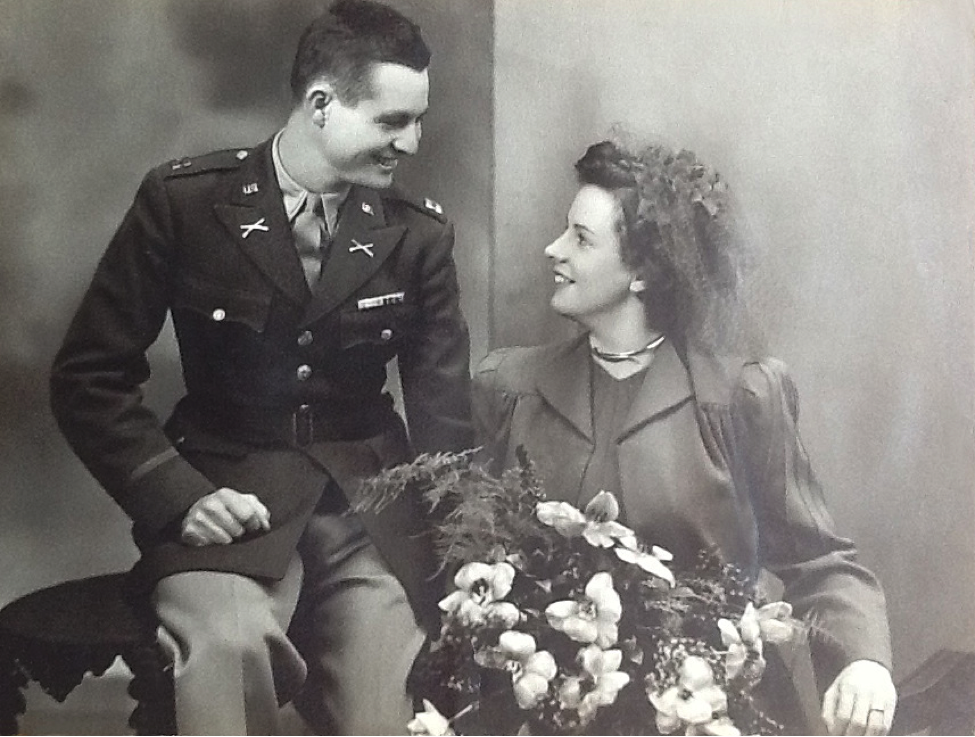
Eulogy
O ye whose cheek the tear of pity stains,
Draw near and pay tribute to these honored dead.
Here lie the precious husband’s dear remains,
The first-time father, and the generous friend.
The committed heart that answered his country’s call,
The dauntless heart and leader of men.
The friend of man on distant shores,
A sacrifice for freedom for those unborn.
–Adapted from Robert Burns
Omery Carl Weathers Jr. was typical of much American youth in his era. In the 1920s and 30s in Salem, he grew up in a small community in northwestern Arkansas nestled in the Ozark Mountains. Omery Jr. was the second born of six siblings and usually went by his middle name, Carl. His father, Omery Sr., and mother, Lucy, had great hopes for their two oldest sons, Don and Carl. Omery Sr. and Lucy modeled good citizenship and service as both were community leaders and actively involved in local politics. However, tragedy struck when Don, Carl, and their siblings suffered the loss of their father. Carl was only 15 years old at the time. As the older sons, Don and Carl had no choice but to face the realities of life. With their mother’s help and guidance, they became the men of the house and took on part-time jobs to help support and care for their four younger siblings.
All through high school, Weathers was known as an all-American kid who threw himself into sports with other boys in the neighborhood.
Carl’s mother, Lucy, was determined to fulfill her and her husband’s dream of giving their boys a priceless gift—a college education. She made many sacrifices to make this possible. A civil servant herself, she saw the possibilities that being in the service could provide for her boys. Accordingly, she encouraged Weathers, and he attended the University of Arkansas on an ROTC scholarship. He was extremely active and involved in university life. He joined the Razorback Booster Club and the YMCA and eventually ran and served as a class officer.
Weathers graduated in May of 1941 and immediately entered the United States Army Infantry as a commissioned officer at the rank of second lieutenant. He quickly rose to the rank of captain.
In 1943, the tide of the war shifted in favor of the Allied Powers, and military leaders planned an invasion of France to fight Hitler and the Nazis. Weathers was deployed overseas with the 2nd Infantry Division, 38th Infantry Regiment, Company K to Ireland for his advance invasion training. Like other soldiers, he was aware of what serving in combat could mean. While in training nonetheless, Carl met a young Irish girl whom he courted and married. I am sure Carl had high hopes of building a family after the war with his young bride. However, Carl would never live to see the son that resulted from his marriage and was his namesake.
On June 7, 1944, D-Day +1, the 2nd Infantry Division went ashore at Omaha Beach. Captain Weathers and his company had been assigned to push inland to capture the French city of Trévières. As Captain Weathers’ company crossed its line of departure, artillery was placed on enemy front lines supporting the advance. Suddenly, an intense German artillery concentration pinned them to the ground. Captain Weathers courageously ran across the entire company front alone toward the enemy line, commanding his men to move forward. Inspired by their leader’s gallantry, his men followed his example and began a vigorous assault. Sadly, Captain Weathers was only able to advance with his men a few hundred feet before being struck and killed by an artillery shell. His heroics did not go unnoticed, however. For his calmness and bravery under fire, personal sacrifice, and unwavering devotion to duty, Captain Weathers was posthumously awarded the Distinguished Service Cross.
Although his sacrifice cut short all of the possibilities for his future, it helped to create limitless options for those of us gathered here today and millions of others. Let us bear witness to his sacrifice and the sacrifice of all those who surround us in this hallowed ground. Captain Weathers fought and died for an ideal that was the genesis of our country—an ideal he and others fought to preserve at home and on distant shores; the motto of his and my home state, Arkansas: Regnat Populas—the People Rule.
His life and sacrifice made our lives possible. Captain Carl Weathers, forever a son of Salem, Arkansas, and Arkansas more generally, we are proud of you and proud to salute you today for your life, service, courage, and sacrifice.
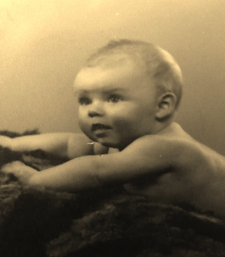
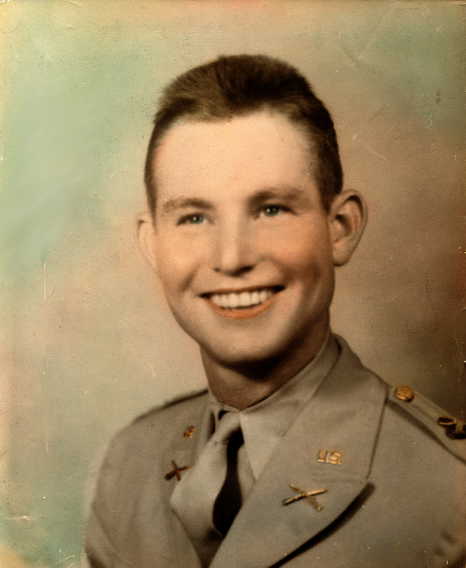
Reflection
From a history lover’s and student’s perspective, getting the opportunity to participate in the 2014 Normandy Institute was a dream come true. When my teacher and I applied for the program, neither of us knew how the experience would affect our lives. Through our in-depth research of Captain Omery Carl Weathers, we formed an emotional bond with a man neither of us had ever met, a man who did not live to lay claim to the bright future that certainly would have been his. As a teenager in the twenty-first century, I think it is too easy to forget the sacrifices made by those before us so that our lives as we know them could be possible. However, traveling to Normandy, France, and walking in Captain Weathers’ footsteps on Omaha Beach and in the dense hedgerows made it all very real for me. Our freedom is not free. It was paid for with the ultimate sacrifice by hundreds of thousands of American servicemen and women.
I want to thank National History Day for making this experience possible and ensuring that my generation and those to follow me will never forget the sacrifices made for our freedom.
To me, Carl Weathers is more than just a statistic or a casualty in the masses. He was a normal man from Salem, Arkansas, a man who was “alive and loved and loving,” who answered his country’s call when it needed him most. I hope that I can be a voice for Captain Carl Weathers by how I live my life and give him the honor he deserves.
Bibliography
Primary Sources
38th Infantry Regiment Daily Diary, 8-9 June 1944. Records of the 2nd Infantry Division. National Archives and Records Administration, College Park, Maryland.
38th Infantry Regiment Regimental Sector of Advance, 7-30 June 1944. Map. Records of the 2nd Infantry Division. National Archives and Records Administration, College Park, Maryland.
Arkansas. Fulton County. 1920 U.S. Federal Census. Digital images. ancestry.com.
Arkansas. Fulton County. 1930 U.S. Federal Census. Digital images. ancestry.com.
Arkansas. Fulton County. 1940 U.S. Federal Census. Digital images. ancestry.com.
“Captain Carl Weathers Missing in Action.” Northwest Arkansas Times, August 12, 1944. Newspapers.com (9374257).
“Captain Carl Weathers Killed in Action.” Northwest Arkansas Times, August 29, 1944. Newspapers.com (9372515).
From D+1 to 105: The Story of the 2nd Infantry Division. Paris: Stars and Stripes, 1944-45. Accessed March 6, 2021. www.lonesentry.com/gi_stories_booklets/2ndinfantry/.
The Greyhound. Salem, Arkansas: Fulton County High School, 1938.
Humphries, George, Interview with the author. March 27, 2014.
Johnson. Every Child Needs A Good School Lunch. Poster. 1944. Northwestern University Library Digital Collections. dc.library.northwestern.edu/items/2b1f2b1b-853f-4c78-921f-2b01393d9da7#zoom=0.39973623872980846&x=0.5&y=0.6954177897574124.
Morley, Hubert. Your Victory Garden Counts More Than Ever. Poster. 1945. Northwestern University Library Digital Collections. dc.library.northwestern.edu/items/d01e7cbd-7ab4-473f-9a4a-152840b3e9ea.
“News of Our Boys in Service: Captain Omery C. Weathers.” Salem Headlight, January 19, 1945.
“O. C. Weathers Dead.” Calico Rock Progress, May 11, 1934. Catalogued at Arkansas Genweb Online. Accessed March 6, 2021. www.argenweb.net/izard/obits/veraobitu.html.
Omery Carl Weathers. Distinguished Service Cross Citation. ancestry.com.
Omery Carl Weathers. Social Security Applications and Claims Index, 1936-2007. ancestry.com.
A Pocket Guide To Northern Ireland. Washington, D.C.: Special Service Division, Services of Supply United States Army, 1942.
The Razorback. Fayetteville: University of Arkansas, 1941.
Second Infantry Division in World War II. Nashville: The Battery Press, Inc., 1946.
Trévières Offensive, 7 June to 10 June 1944. Records of the 2nd Infantry Division. National Archives and Records Administration, College Park, Maryland.
Weathers Family Photographs. Courtesy of Omery Carl Weathers, III.
Weathers III, Omery Carl. E-mail interview with the author. June 16-July 31, 2014.
Weathers, Van, E-mail Interview with the author. February 16, 2013.
Women’s Army Auxiliary Corps Collection. University of Central Arkansas.
WWII Army Casualties: Arkansas. 1946. National Archives and Records Administration. www.archives.gov/research/military/ww2/army-casualties/arkansas.html.
Secondary Sources
Baker, T. Harri, and Jane Browning. An Arkansas History for Young People. Fayetteville: University of Arkansas Press, 1991.
Bearden, Russell E. “Japanese American Relocation Camps.” Encyclopedia of Arkansas History and Culture. Updated June 27, 2018. Accessed March 6, 2021. encyclopediaofarkansas.net/entries/japanese-american-relocation-camps-2273/#.
Berry, Trey. The Arkansas Journey. Salt Lake City: Gibbs Smith, 2007.
“Capt Omery Carl Weathers.” Find a Grave. Updated August 8, 2010. Accessed March 6, 2021. www.findagrave.com/memorial/56651256/omery-carl-weathers.
Daugherty, Leo J. The Battle of the Hedgerows: Bradley’s First Army in Normandy, June-July 1944. St. Paul: MBI Publishing Co., 2001.
Doubler, Captain Michael D. “Busting the Bocage: American Combined Arms Operations in France, 6 June-31 July 1944.” Combat Studies Institute. November, 1988.
Fulton County Heritage Foundation. History and Families, Fulton County Arkansas. Morley: Acclaim Press, 2008.
Harrison, Gordon A. Cross Channel Attack. Hyperwar Foundation. Accessed March 6, 2021. www.ibiblio.org/hyperwar/USA/USA-E-XChannel/USA-E-XChannel-9.html.
Halevy, Drew Philip. “World War II.” Encyclopedia of Arkansas History and Culture. Updated December 1, 2017. Accessed March 6, 2021. encyclopediaofarkansas.net/entries/world-war-ii-2402/.
Kent, Carolyn Yancey. “World War II Ordnance Plants.” Encyclopedia of Arkansas History and Culture. Updated August 25, 2020. Accessed March 6, 2021. encyclopediaofarkansas.net/entries/world-war-ii-ordnance-plants-373/.
Lewis, Carolyn. “Salem (Fulton County).” Encyclopedia of Arkansas History and Culture. Updated January 24, 2017. Accessed March 6, 2021. encyclopediaofarkansas.net/entries/salem-886/.
Life in the 1940s: War and Opportunity On the Border. Newry: Newry and Mourne Museum, 2014.
Simers, Sarah E. “Fulton County.” Encyclopedia of Arkansas History and Culture. Updated December 11, 2018. Accessed March 6, 2021. encyclopediaofarkansas.net/entries/fulton-county-769/.
Simers, Sarah E. “Mammoth Spring (Fulton County)” Encyclopedia of Arkansas History and Culture. Updated July 24, 2018. Accessed March 6, 2021. encyclopediaofarkansas.net/entries/mammoth-spring-fulton-county-885/.
“World War II Rationing On the U.S. Homefront.” Ames History Museum. Accessed March 6, 2021. ameshistory.org/content/world-war-ii-rationing-us-homefront.

